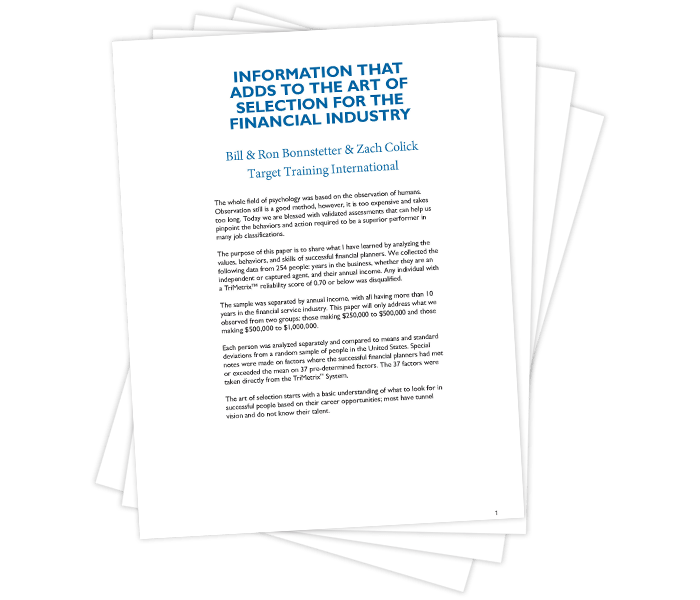
Feb 17, 2022
The most successful financial planners are those that possess a high level of versatility and are able to easily adapt to change. They understand people very well, but they are also very focused on attaining good results. Because of the nature of their business, they are very structured and adhere to financial systems. They understand their roles and take pride in their work. While they focus on the present, many have the drive to further advance their careers and become even more successful.
The information presented in this paper to observe successful and un-successful financial planners. These observations will also carry over into other sales fields.

Aug 20, 2021
This paper demonstrates that when education programs are delivered as if all students have identical learning styles and needs, the students with unique learning styles are put at a disadvantage. On the other handed the authors also describe how the application of digital technology, in particular, the Internet of Things (IoT), is making inclusion possible and democratized education affordable.

Aug 20, 2021
This research provides data driven insights that can be used by engineering educators to better understand distinct segments of undergraduate students. Three clusters emerged that delineated students into three distinct typologies: Steadiness Compliance (SC); Influencing Steadiness (IS) and Dominance Influencing (DI) typology. This affirms once again that students are unique and individual differences require different teaching and learning approaches.

May 13, 2021
Our regularly updated adverse impact studies provide evidence that our assessments offer equal opportunities for all protected groups. This Equal Employment Opportunity Commission (EEOC) definition includes: gender, race, disability and Veteran status.

Sep 3, 2020
TTI’s Personal Interests, Attitudes and Values 2 instrument (PIAV2) is anchored in design and development of their prior PIAV instrument. During the late summer of 2002, TTI initiated a review of the reliability of the six scales and the associated items. That assessment utilized a sample of 2136 cases from 43,325 available cases. These data contained 60% males and 40% females. These responses represent a diverse range of those utilizing this instrument. This assessment of the revised instrument is based on 1,130 responses containing 50.5% males and 49.5% females collected during the late summer of 2003 through the TriMetrix distribution system.




